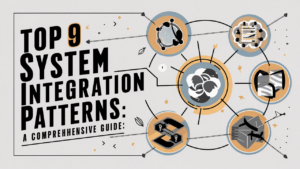Procrastination is a common struggle that affects many people, often leading to stress, missed deadlines, and lower quality of work. It is defined as the action of postponing or delaying something, which can have a significant impact on personal and professional life. This article “How to Stop Procrastinating” provides a detailed, 5-step framework to help you stop procrastinating and boost your productivity.
1. Awareness: Recognize and Categorize Procrastination-Prone Tasks 🧠
The first step to overcoming procrastination is to become aware of it. Categorize your tasks into two types:
- Type I: Big & Scary Projects 😨
- Type II: Small & Boring Tasks 😴
Type I: Big & Scary
These are the most daunting tasks that tend to be long-term and important projects. They are often growth creators but can be overwhelming. Schedule a daily assessment of your day-to-day actions. Ask yourself:
- Am I proud of the actions I am taking on these big projects?
- Am I doing what I should be doing?
If the answers are “no,” then you have identified a procrastination-prone task and can move on to the next step.
Type II: Small & Boring
These tasks are usually mundane and repetitive. While they may not be as intimidating as Type I tasks, they can still lead to procrastination due to their tedious nature.
2. Deconstruction: Break Down Big Projects into Manageable Tasks 🧩
The driver of Type I procrastination is that big projects are inherently overwhelming. For instance, if your goal is to “create an e-commerce portal with 500 products,” you’re likely to procrastinate because the task is too large.
How to Deconstruct Tasks
Break down the big project into small, incremental tasks. For example:
- Gather product images
- Create video content
- Write product descriptions
- Design the website wireframe
This approach makes the task less intimidating and more manageable.
Goal: Convert Intimidating into Manageable
By deconstructing the big and scary projects, you convert them into smaller, actionable tasks that are easier to tackle.
3. Plan Creation: Develop a Specific and Time-Bound Plan 📅
Creating a plan is crucial to overcoming procrastination. Your plan should be:
- Specific: Clearly define what you’ll do.
- Time-Bound: Set deadlines for each task.
Specificity
Being specific about your tasks helps in visualizing the end goal and the steps required to achieve it. For instance, instead of saying “work on the e-commerce website,” specify “create 10 product descriptions.”
Time-Bound
Set realistic deadlines for each task. Overestimating what you can do in a day leads to burnout and procrastination. Set smaller, more manageable time frames to ensure steady progress.
Reward System
On completing a task, allow yourself a small reward. For example, you might watch a Netflix show or a YouTube video for 10 minutes. This positive reinforcement encourages productivity.
4. Stake Creation: Raise the Stakes to Motivate Yourself 🚩
Creating stakes can drive better outcomes by adding a sense of urgency and importance to your tasks.
Ideas for Raising Stakes
- Public Declaration: State your intentions publicly to make it harder to back out.
- Social Pressure: Meet a friend to do the initial work together.
- Reward or Penalty: Plan a reward or penalty if you do/don’t complete your tasks.
Mental Games
Use mental games to make the tasks more engaging. For example, challenge yourself to complete a task within a set time frame or compete with a friend.
5. Action: Overcome the Initial Hurdle to Start Moving 🏃♂️
Taking action is often the hardest part. Remember, a body in motion tends to stay in motion. Here are some tips to get started:
Sync Session
Plan a “sync session” where you meet a friend to start the initial movement. This can be a powerful motivator as it combines social interaction with productivity.
Reward Movement
Attach a small reward to completing the initial movement, such as a short walk or a treat.
Lion Technique
Commit to a short sprint followed by a rest. This technique helps in overcoming inertia and building momentum.
Detailed Examples and Applications 📋
Scenario 1: Writing a Research Paper
Without DI:
- You might procrastinate by thinking about the enormity of writing a full paper.
Using DI:
- Break down the task into smaller steps like “research the topic,” “create an outline,” “write the introduction,” etc.
- Set specific and time-bound goals for each step, like “finish research by Friday.”
- Reward yourself with a treat after completing each step.
Scenario 2: Preparing for a Presentation
Without DI:
- The thought of preparing an entire presentation might lead to procrastination.
Using DI:
- Deconstruct the task into smaller parts such as “gather data,” “create slides,” “practice speaking.”
- Plan each part with deadlines, e.g., “create slides by Monday.”
- Use stakes like presenting to a friend first for feedback.
Practical Tips for Staying on Track 🎯
Use Technology
Leverage productivity tools like:
- Trello: For organizing tasks
- Pomodoro Technique Apps: For managing time
- Habitica: For gamifying your tasks
Stay Accountable
Share your progress with a friend or mentor to stay accountable. Regular check-ins can help you stay focused and motivated.
Reflect and Adjust
Periodically reflect on your progress and adjust your plans as needed. Flexibility is key to maintaining momentum.
Conclusion : How to Stop Procrastinating
Procrastination is a challenge that everyone faces, but with the right strategies, it can be overcome. By understanding the nature of your tasks, breaking them down into manageable parts, creating specific and time-bound plans, raising the stakes, and taking action, you can improve your productivity and achieve your goals.







